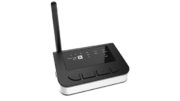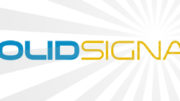Hey, remember about two years ago when all of a sudden every restaurant had a QR code instead of a menu? Did they annoy you at the time, or were you just focused on not getting sick from touching paper? It turns out that wasn’t really a concern, but it sure seems like of all the things that spread pretty fast in the 2020s, the QR code was… let’s say… the second fastest spreading.
A little bit about the QR code
QR codes are the most well-known of what are commonly called 2D bar codes. They are technically not bar codes at all, but I’ll get to that. Everyone knows what bar codes are at this point. Pretty much every piece of product packaging has one, thanks to a push to include them that started in the 1970s. UPC codes found on groceries are known as 1D bar codes, meaning that they can contain data that can be read in only one direction (left to right, or right to left, the codes are designed so either works.) However, 2D bar codes have data in two dimensions, meaning that more information can be put in a smaller space.
Shipping companies started using 2D bar codes in the 1990s, while QR codes themselves were invented in 1994. They were largely ignored by the general public for about 15 years, since in order to read them you needed a handheld scanner with both a digital camera and processing software. Suddenly, in the late 2000s, pretty much everyone had those things in the form of a smartphone.
QR code usage
QR codes were only one of the competing formats to emerge for cell phone use in the 2010s. Microsoft’s HCCB format, which they branded as Microsoft Tag, was a similar idea made of contrasting colored triangles. They looked like this:

which honestly, looks a lot more fun than the QR code format that eventually won out. I haven’t seen one of them in the wild for about 10 years, though. Still, I have to assume that there is a loyal following for Microsoft Tags somewhere, because there’s a loyal following for pretty much everything that ever existed, if you think about it.
I first started using QR codes in about 2012, as I thought they would rise in popularity to help people manage their contacts. Combined with the open VCF card standard, I thought it would be the way people shared contacts. In the 2000s Palm devices allowed you to share them from person to person easily, but the technology to text a contact to someone hadn’t quite been invented in 2012.
The suddenly everywhereness of QR codes
Starting in 2015, Androids gained the ability to use QR codes as part of the operating system. It used to be that you had to use a separate app, but with Android 6.0 all that was required was the default camera app in most cases. Apple followed suit in 2017, and that started the QR code revolution that got turbocharged in 2020 for obvious reasons.
And yes, in the ’20s, QR codes are everywhere. You’ll find them in commercials on TV shows. They’re near bus benches. Menus had them for a while. Some still do. You can make your own with any number of free generators. That’s where I got the one at the top of this article. Just pointing your phone’s camera at it will tell you where it goes.
The QR code isn’t pretty. There are some things you can do to spruce it up if you must. You can put a logo in the middle. You can change the color or even change the squares to rectangles. But in the end, it’s still going to be ugly. But, just like UPC codes before them, they’re so common that no one cares how ugly they are.
I hate when these things don’t scan
In general, QR codes are more reliable than UPC codes. It’s not the code itself, really. UPC codes still rely on laser scanners with rotating heads. It’s how it’s been done for over 40 years. I don’t know why supermarkets don’t move to digital cameras. Maybe some have. All I know is mine haven’t. Since QR codes can take advantage of the supercomputer power in your pocket, they tend to be easier to interpret.
Will we have 3D bar codes?
A truly 3D barcode wouldn’t make a lot of sense because you’d probably have to scan all four sides. But you could have a holographic code. Holographic storage is used in cases when you need a read-only storage medium that’s both durable and dense. I’ve yet to see something like this but it is possible. Unfortunately I’m not sure your average phone could scan holographic barcodes, but who knows what we’ll see in the next few years.





